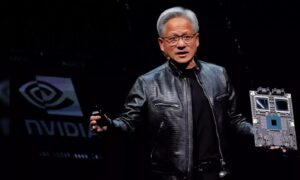Rafael LaVerde argues for BTC SV in Miami block size debate
3 min read [ad_1]
A BTC block size debate took place during April’s digital currency conference, called the Miami Crypto Experience. Three individuals representing BTC SV (BSV), BTC, and BCH took the stage to convince the audience why the version of BTC that they represent is the best version of BTC.
Rafael LaVerde, the crypto-economics analyst as well as the host of The Crypto Vigilante YouTube series, argued for BSV, while JC Crown argued for BTC and Sterlin Lujan argued for BCH.
To kick off the debate, Chris Odom CTO and co-founder of Stash Crypto and an early BTC supporter who says he is now relatively blockchain agnostic, gave the audience some background information regarding why three different versions of BTC exist in the first place.
“At some point, if the developers start to have a disagreement about the protocol, you know, maybe some developers think that the protocol should have a larger block size and some think that it should have a smaller block size, and they’re unable to agree, then they just fork, they split,” Odom said.
“So you end up with some of the nodes running one version of the protocol and some of the nodes running a different version of the protocol, and they both take the same shared history of the blockchain and [then] diverge.”
With the stage set and the audience up to speed regarding why BTC has forked a few times, the panelists were ready to debate. They start by answering the question, “Why is the BTC that they are representing the best version of BTC,” to which LaVerde answered,
“I’ve been in the space for almost ten years, I’m here because I think it’s very important to be objective, as an analyst we strive to be as objective as possible, that is our goal.”
“The word BTC is a composite word, it’s ‘Bit’ [and] ‘Coin’; what these guys (the other panelists) have been emphasizing here has been the coin aspect of BTC, one guy represents something that wants to be digital gold, the other guy represents something that wants to be digital cash, but the truth guys, is [that] according to sound money Austrian theory, neither of these coins meets that criteria! That’s because they try to make BTC into something that BTC was not.”
LaVerde goes on to explain why neither BTC nor BCH is BTC as it is described in the original BTC white paper. Afterward, the panel discusses mining and the hash rate that supports each network, their beliefs and ideas about the best way to scale BTC, the best/most interesting implementations of BTC they have seen, and more.
The group even breaks out into a very intense debate to close the panel out.
The debate gives the audience a very high-level overview of the three different versions of BTC, the beliefs that coincide with each chain and the goals that each chain is trying to accomplish. And LaVerde, for his part, is well-spoken, high energy, and very passionate about BSV as he argues for it.
That being said, the debate can serve as somewhat of a crash-course into BTC and its forks for individuals who are new to the industry. Even if you are a veteran in the industry, watching the debate will give you insight into what each blockchain network is currently focused on building out. So whether you are new to the blockchain and digital currency space or have been here since day one, I recommend watching the Block Size Debate at Miami Crypto Experience to learn more about each network.
New to BTC? Check out CoinGeek’s BTC for Beginners section, the ultimate resource guide to learn more about BTC—as originally envisioned by Satoshi Nakamoto—and blockchain.






